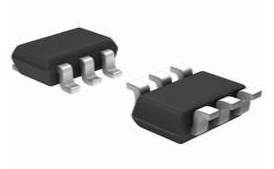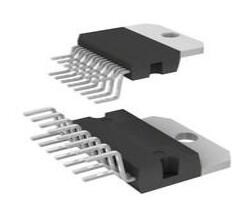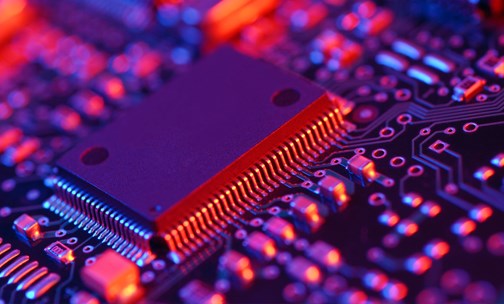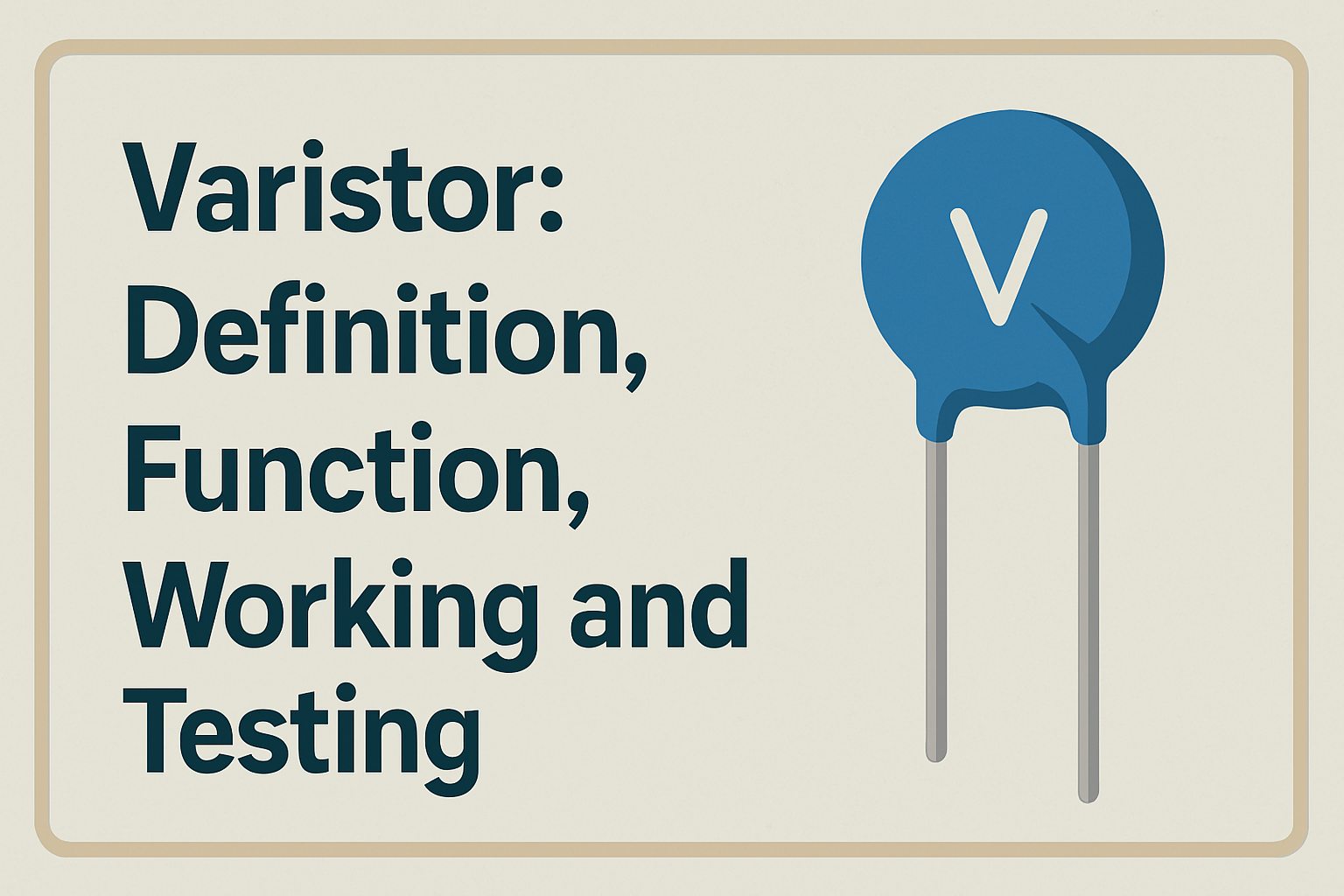NXP MPX5700ASX Pressure Sensor: Features, Applications, and Integration
MPX5700 Series Absolute Pressure Sensor Analog Voltage -40°C~125°C 2.18PSI ~ 101.53PSI (15kPa ~ 700kPa) Barbed ±2.5% 0.2 V ~ 4.7 V 4.75V~5.25V









MPX5700 Series Absolute Pressure Sensor Analog Voltage -40°C~125°C 2.18PSI ~ 101.53PSI (15kPa ~ 700kPa) Barbed ±2.5% 0.2 V ~ 4.7 V 4.75V~5.25V
Reviewing the MPX5700ASX pressure sensor's accuracy, durability, and seamless integration for industrial applications. Ideal for manufacturing and automation.
Product Introduction
The MPX5700ASX stands out as a dependable and versatile pressure sensor designed for industrial applications. Its precision and reliability make it ideal for industries requiring accurate measurements. You can rely on this sensor to deliver consistent results, with a maximum error of just 2.5% across temperatures from 0° to 85°C. It measures pressures ranging from 0 to 700 kPa and outputs voltages between 0.2 and 4.7 V, ensuring top-notch performance. Whether you need a sensor for manufacturing, automation, or environmental monitoring, the MPX5700ASX meets your demands with ease.
Overview of the MPX5700ASX
Purpose and Functionality of the Pressure Sensor
The MPX5700ASX is a highly reliable pressure sensor designed to measure and monitor pressure in various industrial settings. You can use it to detect changes in pressure and convert them into an electrical signal. This makes it ideal for applications where precise pressure readings are essential. The sensor uses piezoresistive technology, which ensures accurate and consistent performance. Whether you need to measure gauge pressure, absolute pressure, or differential pressure, this sensor adapts to your needs. Its versatility makes it suitable for industries like manufacturing, automation, and environmental monitoring.
Key Specifications of the MPX5700ASX
The MPX5700ASX offers impressive specifications that make it stand out among other pressure sensors. It measures pressures ranging from 0 to 700 kPa, providing a wide range for industrial applications. The sensor outputs a voltage between 0.2 and 4.7 V, which is proportional to the applied pressure. This high-level analog output simplifies integration with microcontrollers and other sensor systems. The sensor operates within a temperature range of 0° to 85°C, ensuring reliable performance in various environments. Its compact design and robust build make it easy to install and maintain.
Unique Features Enhancing Industrial Applications
The MPX5700ASX incorporates advanced features that enhance its performance in industrial applications. It includes on-chip signal conditioning, temperature compensation, and calibration, which improve accuracy and reliability. The sensor uses advanced micromachining techniques and bipolar processing, ensuring consistent results even in demanding conditions. Its high-level analog output allows seamless interfacing with modern sensor technologies. These features make the MPX5700ASX a preferred choice for industries requiring precise and robust pressure measurement. You can rely on this sensor to deliver consistent results, even in challenging environments.
Key Features and Benefits
Performance and Accuracy of the MPX5700ASX
You can rely on the MPX5700ASX for precise pressure measurements in demanding industrial environments. This pressure sensor delivers consistent results with a maximum error of just 2.5% across a wide temperature range. Its piezoresistive technology ensures high accuracy, making it ideal for applications where even minor deviations can impact operations. The sensor’s ability to measure pressures up to 700 kPa provides flexibility for various tasks, from monitoring fluid levels to controlling pneumatic systems.
The MPX5700ASX also features on-chip signal conditioning and temperature compensation. These enhancements minimize errors caused by environmental changes, ensuring reliable performance. Whether you need to monitor pressure in manufacturing processes or environmental systems, this sensor adapts to your needs with precision and efficiency.
Durability and Build Quality for Industrial Environments
Industrial settings demand sensors that can withstand harsh conditions, and the MPX5700ASX excels in this regard. Its robust construction ensures durability, even in environments with high temperatures, vibrations, or exposure to contaminants. The sensor operates effectively within a temperature range of 0° to 85°C, making it suitable for both indoor and outdoor applications.
The compact design of the MPX5700ASX simplifies installation while reducing the risk of damage during operation. Advanced micromachining techniques enhance its structural integrity, ensuring long-term reliability. You can depend on this pressure sensor to perform consistently, even in challenging industrial scenarios.
Compatibility with Industrial Systems
Integrating the MPX5700ASX into existing systems is straightforward, thanks to its high-level analog output. The sensor provides a voltage range of 0.2 to 4.7 V, which is proportional to the applied pressure. This feature simplifies communication with microcontrollers, data acquisition systems, and other industrial devices.
The MPX5700ASX is compatible with a wide range of industrial systems, including automation equipment, HVAC systems, and fluid control mechanisms. Its versatility allows you to use it across multiple applications without requiring extensive modifications. Whether you’re upgrading an existing setup or building a new system, this pressure sensor ensures seamless integration and reliable operation.
Ease of Integration into Existing Systems
Integrating the MPX5700ASX into your existing systems is straightforward and efficient. This sensor is designed with user-friendly features that simplify the process, even if you are working with complex industrial setups. Its high-level analog output, which ranges from 0.2 to 4.7 V, ensures compatibility with a wide variety of devices, including microcontrollers, data acquisition systems, and programmable logic controllers (PLCs). This flexibility allows you to connect the sensor to your system without requiring extensive modifications or additional components.
The compact design of the MPX5700ASX makes it easy to install in tight spaces. You can mount it securely using standard fittings, ensuring a stable and reliable connection. The sensor’s robust build minimizes the risk of damage during installation, even in environments with vibrations or other physical challenges. This durability ensures that your integration process remains hassle-free and cost-effective.
Another advantage of this sensor is its pre-calibrated output. The MPX5700ASX comes with on-chip signal conditioning and temperature compensation, which eliminates the need for manual calibration. This feature saves you time and reduces the likelihood of errors during setup. You can trust the sensor to deliver accurate readings right out of the box, making it an ideal choice for time-sensitive projects.
If you are upgrading an existing system, the MPX5700ASX offers seamless compatibility. Its voltage output aligns with industry standards, ensuring that it works well with most industrial equipment. Whether you are replacing an outdated sensor or adding new functionality to your system, this device integrates smoothly without disrupting your operations.
For those working with automation or monitoring systems, the MPX5700ASX provides reliable data transmission. Its high-level analog output ensures clear and consistent communication with your devices. This feature is particularly useful in applications where real-time data is critical, such as fluid control or environmental monitoring. You can rely on this sensor to maintain stable performance, even in demanding conditions.
Applications in Industrial Settings
Industries Where the MPX5700ASX Excels
The MPX5700ASX pressure sensor plays a vital role in several industries. Its ability to deliver precise pressure readings makes it a valuable tool in manufacturing. You can use it to monitor and control processes that require accurate pressure measurements, such as injection molding or metal forming. The sensor ensures that production lines operate efficiently and meet quality standards.
In the automation industry, this pressure sensor enhances system performance. It helps regulate pneumatic systems, ensuring smooth and reliable operation. You can rely on it to maintain consistent pressure levels, which is crucial for automated machinery.
The environmental monitoring sector also benefits from the MPX5700ASX. This sensor measures pressure changes in air or water systems, helping you track environmental conditions. It supports applications like weather monitoring, water treatment, and air quality control.
The HVAC industry relies on pressure sensors like the MPX5700ASX to optimize system performance. You can use it to monitor airflow and maintain proper ventilation. This ensures energy efficiency and a comfortable environment.
Common Use Cases and Scenarios for the Pressure Sensor
The MPX5700ASX pressure sensor adapts to various applications. In fluid control systems, it monitors pressure levels to ensure proper flow. You can use it to detect leaks or blockages, preventing system failures. This makes it an essential component in pipelines and hydraulic systems.
In pneumatic systems, the sensor regulates air pressure to maintain smooth operation. It ensures that actuators and valves function correctly, improving system reliability. You can depend on it to enhance the performance of industrial automation equipment.
The sensor also excels in flow measurement. By monitoring pressure changes, it helps calculate flow rates in liquids or gases. This is particularly useful in industries like oil and gas, where accurate flow data is critical.
In environmental monitoring, the MPX5700ASX tracks pressure variations in air or water systems. You can use it to measure atmospheric pressure, monitor water levels, or detect changes in air quality. These applications support efforts to protect the environment and ensure public safety.
Another common use case is in HVAC systems. The sensor monitors airflow and pressure levels, helping you maintain optimal system performance. This ensures energy efficiency and a comfortable indoor environment.
The MPX5700ASX also supports medical applications. It measures pressure in devices like ventilators or blood pressure monitors. You can rely on it to provide accurate readings, ensuring patient safety and effective treatment.
Pros and Cons
Advantages of the MPX5700ASX Pressure Sensor
The MPX5700ASX offers several advantages that make it a standout choice for industrial applications.
High Accuracy: This sensor delivers precise pressure measurements with a maximum error of just 2.5%. You can rely on it for tasks where accuracy is critical.
Wide Pressure Range: It measures pressures from 0 to 700 kPa, making it suitable for diverse applications, from fluid control to environmental monitoring.
Durable Design: The sensor’s robust construction ensures it withstands harsh industrial conditions, including high temperatures and vibrations.
Ease of Integration: Its high-level analog output simplifies connection to microcontrollers and other devices. You can integrate it into existing systems without extensive modifications.
Pre-Calibrated Output: The sensor comes with on-chip signal conditioning and temperature compensation. This feature saves you time during setup and ensures reliable performance.
Tip: If you need a sensor that combines accuracy, durability, and ease of use, the MPX5700ASX is an excellent choice for your industrial needs.
Potential Limitations in Industrial Applications
While the MPX5700ASX excels in many areas, it has a few limitations you should consider:
Temperature Range: The sensor operates effectively between 0° and 85°C. If your application involves extreme temperatures outside this range, you may need to explore alternative sensors.
Analog Output Only: The MPX5700ASX provides a high-level analog output. If your system requires digital output, you might need additional components to convert the signal.
Limited Pressure Range for Some Applications: Although the 0 to 700 kPa range suits most industrial tasks, certain high-pressure applications may require a sensor with a broader range.
Note: Understanding these limitations helps you determine if the MPX5700ASX aligns with your specific requirements.
Comparison with Alternatives
How the MPX5700ASX Stands Out Among Pressure Sensors
The MPX5700ASX offers unique advantages that set it apart from other sensors. Its high accuracy ensures precise pressure measurements, making it ideal for critical industrial applications. You can depend on its piezoresistive technology to deliver consistent results, even in challenging environments. The sensor’s wide pressure range, from 0 to 700 kPa, provides flexibility for various tasks, such as fluid control and environmental monitoring.
Another standout feature is its on-chip signal conditioning. This enhancement eliminates the need for manual calibration, saving you time during setup. The sensor also includes temperature compensation, which ensures reliable performance across a range of conditions. Its high-level analog output simplifies integration with microcontrollers and other devices, making it a versatile choice for modern industrial systems.
The MPX5700ASX’s durability further distinguishes it from other sensors. Its robust construction withstands harsh environments, including high temperatures and vibrations. This reliability makes it a preferred option for industries requiring long-lasting performance.
Similar Sensors in the Market and Their Features
Several sensors compete with the MPX5700ASX in the market. For example, the Honeywell MPR series offers compact designs and digital outputs. These sensors are suitable for applications requiring digital communication but may lack the MPX5700ASX’s wide pressure range.
The Bosch BMP280 is another alternative. It excels in environmental monitoring with its low power consumption and digital interface. However, its pressure range is limited compared to the MPX5700ASX, making it less versatile for industrial tasks.
The TE Connectivity MS5803 series provides high accuracy and a digital output. While these sensors perform well in specific applications, their durability may not match the MPX5700ASX’s robust design.
When choosing a sensor, consider your specific needs. The MPX5700ASX stands out for its accuracy, durability, and ease of integration, making it a reliable choice for industrial applications.
The MPX5700ASX stands out as a reliable and versatile pressure sensor for industrial applications. Its high accuracy, robust design, and seamless integration with industrial systems make it a dependable choice. You can trust this sensor to deliver consistent performance, even in demanding environments.
If you need a pressure sensor that combines precision, durability, and ease of use, the MPX5700ASX is an excellent option. Consider it for your specific industrial needs to enhance efficiency and ensure reliable operations.
FAQ
What makes the MPX5700ASX suitable for industrial applications?
Its durability and accuracy make it ideal for industrial use. You can rely on this sensor to perform consistently in harsh environments. Its wide pressure range and pre-calibrated output simplify integration into various systems.
Can the MPX5700ASX handle extreme temperatures?
The sensor operates effectively between 0° and 85°C. If your application involves temperatures outside this range, you may need to consider alternative options.
How easy is it to integrate the MPX5700ASX into existing systems?
Its high-level analog output ensures compatibility with most industrial devices. You can install it quickly without extensive modifications, saving time and effort.
Is the MPX5700ASX suitable for environmental monitoring?
Yes, it excels in tracking pressure changes in air and water systems. You can use it for applications like weather monitoring, water treatment, and air quality control.
Does the MPX5700ASX require manual calibration?
No, it features on-chip signal conditioning and temperature compensation. These enhancements eliminate the need for manual calibration, ensuring accurate readings right out of the box.
Specifications
- TypeParameter
- Factory Lead Time12 Weeks
- Package / Case
refers to the protective housing that encases an electronic component, providing mechanical support, electrical connections, and thermal management.
6-SIP Module - Surface Mount
having leads that are designed to be soldered on the side of a circuit board that the body of the component is mounted on.
NO - Mounting Feature
a process by which the operating system makes files and directories on a storage device (such as hard drive, CD-ROM, or network share) available for users to access via the computer's file system.
THROUGH HOLE MOUNT - Operating Temperature
The operating temperature is the range of ambient temperature within which a power supply, or any other electrical equipment, operate in. This ranges from a minimum operating temperature, to a peak or maximum operating temperature, outside which, the power supply may fail.
-40°C~125°C - Series
In electronic components, the "Series" refers to a group of products that share similar characteristics, designs, or functionalities, often produced by the same manufacturer. These components within a series typically have common specifications but may vary in terms of voltage, power, or packaging to meet different application needs. The series name helps identify and differentiate between various product lines within a manufacturer's catalog.
MPX5700 - Published1998
- Part Status
Parts can have many statuses as they progress through the configuration, analysis, review, and approval stages.
Active - Moisture Sensitivity Level (MSL)
Moisture Sensitivity Level (MSL) is a standardized rating that indicates the susceptibility of electronic components, particularly semiconductors, to moisture-induced damage during storage and the soldering process, defining the allowable exposure time to ambient conditions before they require special handling or baking to prevent failures
Not Applicable - ECCN Code
An ECCN (Export Control Classification Number) is an alphanumeric code used by the U.S. Bureau of Industry and Security to identify and categorize electronic components and other dual-use items that may require an export license based on their technical characteristics and potential for military use.
EAR99 - Applications
The parameter "Applications" in electronic components refers to the specific uses or functions for which a component is designed. It encompasses various fields such as consumer electronics, industrial automation, telecommunications, automotive, and medical devices. Understanding the applications helps in selecting the right components for a particular design based on performance, reliability, and compatibility requirements. This parameter also guides manufacturers in targeting their products to relevant markets and customer needs.
Board Mount - HTS Code
HTS (Harmonized Tariff Schedule) codes are product classification codes between 8-1 digits. The first six digits are an HS code, and the countries of import assign the subsequent digits to provide additional classification. U.S. HTS codes are 1 digits and are administered by the U.S. International Trade Commission.
8542.39.00.01 - Voltage - Supply
Voltage - Supply refers to the range of voltage levels that an electronic component or circuit is designed to operate with. It indicates the minimum and maximum supply voltage that can be applied for the device to function properly. Providing supply voltages outside this range can lead to malfunction, damage, or reduced performance. This parameter is critical for ensuring compatibility between different components in a circuit.
4.75V~5.25V - Output
In electronic components, the parameter "Output" typically refers to the signal or data that is produced by the component and sent to another part of the circuit or system. The output can be in the form of voltage, current, frequency, or any other measurable quantity depending on the specific component. The output of a component is often crucial in determining its functionality and how it interacts with other components in the circuit. Understanding the output characteristics of electronic components is essential for designing and troubleshooting electronic circuits effectively.
0.2 V ~ 4.7 V - Termination Style
"Termination style" in electronic components refers to the method used to connect the component to a circuit board or other electronic devices. It determines how the component's leads or terminals are designed for soldering or mounting onto the circuit board. Common termination styles include through-hole, surface mount, and wire lead terminations.Through-hole components have leads that are inserted through holes in the circuit board and soldered on the other side. Surface mount components have flat terminals that are soldered directly onto the surface of the circuit board. Wire lead terminations involve attaching wires to the component for connection.The choice of termination style depends on factors such as the type of component, the manufacturing process, and the space available on the circuit board. Different termination styles offer various advantages in terms of ease of assembly, reliability, and space efficiency in electronic designs.
PC Pin - Body Length or Diameter
Body length or diameter in electronic components refers to the physical dimensions of a component's housing, typically measured in millimeters or inches. It indicates the size of the component that affects its fit within a circuit board or system. This parameter is crucial for ensuring compatibility with the design and mounting of electronic devices. It can impact heat dissipation, electrical performance, and overall assembly efficiency. Accurate measurement of body length or diameter is essential for proper component selection and placement in electronic applications.
27.94mm - Body Breadth
Body breadth in electronic components refers to the width of the physical body of a component, such as a resistor, capacitor, or integrated circuit. This measurement is crucial for ensuring proper fit within a circuit board or enclosure. It can affect the component's thermal performance, mechanical stability, and overall compatibility with other components in a design. Body breadth is typically specified in millimeters or inches and is an important factor in the selection and design of electronic assemblies.
16.25 mm - Output Type
The "Output Type" parameter in electronic components refers to the type of signal or data that is produced by the component as an output. This parameter specifies the nature of the output signal, such as analog or digital, and can also include details about the voltage levels, current levels, frequency, and other characteristics of the output signal. Understanding the output type of a component is crucial for ensuring compatibility with other components in a circuit or system, as well as for determining how the output signal can be utilized or processed further. In summary, the output type parameter provides essential information about the nature of the signal that is generated by the electronic component as its output.
Analog Voltage - Accuracy
Accuracy in electronic components refers to the degree to which a measured value agrees with the true or accepted value. It evaluates the precision of a component in providing correct output or measurement under specified conditions. High accuracy indicates minimal deviation from the actual value, while low accuracy shows significant error in measurement. This parameter is crucial in applications where precise data is essential for reliable performance and decision-making.
±2.5% - Response Time
the time taken for a circuit or measuring device, when subjected to a change in input signal, to change its state by a specified fraction of its total response to that change.
1000 μs - Operating Pressure
An operating pressure is the amount of internal force applied to the walls of some type of pressure vessel during normal conditions.
2.18PSI ~ 101.53PSI (15kPa ~ 700kPa) - Pressure Type
Pressure Type in electronic components refers to the type of pressure that the component can withstand without being damaged or malfunctioning. This parameter is important in applications where the component may be exposed to varying levels of pressure, such as in industrial or automotive settings. The pressure type specification typically includes information on the maximum pressure the component can handle, whether it is positive or negative pressure, and any specific conditions under which the component can operate safely. It is crucial to consider the pressure type rating when selecting electronic components for use in environments where pressure variations are a concern.
Absolute - Port Style
Port style in electronic components refers to the physical and electrical characteristics of a connection point on a device or circuit. It encompasses the design and configuration of ports used for input and output, including their shape, size, and pin arrangement. Different port styles are used to ensure compatibility and facilitate connections between various electronic devices and systems. This parameter is crucial for defining how components interface with one another in electronic design and integration.
Barbed - Port Size
In electronic components, the parameter "Port Size" typically refers to the physical dimensions of the ports or connectors on the component. This measurement is important for determining compatibility with other components or devices that need to be connected. Port size can include the diameter, length, and shape of the ports, as well as the spacing between multiple ports on the same component. Understanding the port size is crucial for ensuring proper fit and connection between components in an electronic system. It is often specified in datasheets or product specifications to help users select the appropriate components for their needs.
Male - 0.19 4.93mm Tube - Linearity
In electronic components, linearity refers to the relationship between the input and output signals of the component. A component is said to be linear if its output is directly proportional to its input over a specified range. In other words, when the input signal changes, the output signal changes in a consistent and predictable manner without introducing distortion or non-linear effects.Linearity is an important parameter in electronic components such as amplifiers, filters, and sensors, as it determines the accuracy and fidelity of signal processing. Non-linearities in components can lead to signal distortion, harmonic generation, and other undesirable effects that can degrade the performance of electronic systems.Engineers often characterize the linearity of components by measuring parameters such as gain error, harmonic distortion, and intermodulation distortion. By ensuring that components exhibit good linearity characteristics, designers can create electronic systems that accurately process signals and faithfully reproduce the desired output.
2.5 % - Maximum Pressure
The parameter "Maximum Pressure" in electronic components refers to the maximum amount of pressure or force that the component can withstand without being damaged or failing. This specification is important for components that may be exposed to external pressure, such as in high-pressure environments or applications where physical pressure may be applied. Exceeding the maximum pressure rating of a component can lead to deformation, cracking, or complete failure of the component, potentially causing system malfunctions or safety hazards. It is crucial to adhere to the specified maximum pressure limits to ensure the reliable operation and longevity of electronic components in various applications.
406.11PSI (2800kPa) - Sensors/Transducers Type
In electronic components, the parameter "Sensors/Transducers Type" refers to the specific type of sensor or transducer that is integrated into the component. Sensors are devices that detect changes in physical properties and convert them into electrical signals, while transducers are devices that convert one form of energy into another. The type of sensor or transducer used in an electronic component can vary widely depending on the intended application, such as temperature sensors, pressure sensors, proximity sensors, accelerometers, and more. Understanding the Sensors/Transducers Type parameter is crucial for selecting the right component for a particular electronic system or device, as different types of sensors/transducers have different functionalities and performance characteristics.
PRESSURE SENSOR,PEIZORESISTIVE - Housing
Housing in electronic components refers to the physical enclosure that protects the internal circuitry and components from environmental factors such as dust, moisture, and mechanical damage. It provides structural support and electrical insulation while facilitating heat dissipation. The design and materials used for housing are crucial for the reliability and performance of the electronic device, as they impact factors like thermal management, electromagnetic interference, and overall aesthetics.
PLASTIC - Pressure Range-Max
Pressure Range-Max in electronic components refers to the maximum amount of pressure that the component can withstand without being damaged or malfunctioning. This parameter is crucial in applications where the component may be exposed to varying levels of pressure, such as in industrial or automotive settings. It is typically specified in units such as pounds per square inch (psi) or pascals (Pa). Ensuring that electronic components are rated for the appropriate pressure range is essential to prevent failures and maintain the reliability of the overall system.
101.5 Psi - Offset-Nom
Offset-Nom is a parameter commonly found in electronic components, particularly in operational amplifiers and other analog circuits. It refers to the nominal value of the input offset voltage, which is the voltage difference required between the two input terminals of the component to bring the output voltage to zero. In other words, it represents the inherent voltage offset present in the component that can affect the accuracy of the output signal. The Offset-Nom value is specified by the manufacturer and is important to consider when designing circuits that require precise voltage levels or when high accuracy is needed.
0.20V - Features
In the context of electronic components, the term "Features" typically refers to the specific characteristics or functionalities that a particular component offers. These features can vary depending on the type of component and its intended use. For example, a microcontroller may have features such as built-in memory, analog-to-digital converters, and communication interfaces like UART or SPI.When evaluating electronic components, understanding their features is crucial in determining whether they meet the requirements of a particular project or application. Engineers and designers often look at features such as operating voltage, speed, power consumption, and communication protocols to ensure compatibility and optimal performance.In summary, the "Features" parameter in electronic components describes the unique attributes and capabilities that differentiate one component from another, helping users make informed decisions when selecting components for their electronic designs.
Temperature Compensated - Sensitivity (mV/V)
The parameter "Sensitivity (mV/V)" in electronic components refers to the ratio of the output voltage change to the input voltage change, typically expressed in millivolts per volt (mV/V). It indicates how responsive the component is to changes in the input voltage, providing a measure of its ability to convert input signals into output signals. A higher sensitivity value means that the component will produce a larger output voltage change for a given input voltage change, making it more responsive and accurate in its operation. Sensitivity is an important characteristic in various electronic devices such as sensors, transducers, and amplifiers, as it directly impacts the precision and reliability of the system's performance.
6.4 mV/V - Body Height
In electronic components, "Body Height" refers to the vertical dimension of the component's physical body or package. It is the measurement from the bottom of the component to the top, excluding any leads or terminals. Body Height is an important parameter to consider when designing circuit boards or enclosures to ensure proper fit and clearance. It is typically specified in datasheets or technical drawings provided by the component manufacturer. Understanding the Body Height of electronic components is crucial for proper placement and integration within a circuit or system.
19.05mm - RoHS Status
RoHS means “Restriction of Certain Hazardous Substances” in the “Hazardous Substances Directive” in electrical and electronic equipment.
ROHS3 Compliant
Parts with Similar Specs
- ImagePart NumberManufacturerPackage / CaseAccuracyPort StyleRoHS StatusOffset-NomFactory Lead TimeApplicationsView Compare
MPX5700ASX
6-SIP Module
±2.5%
Barbed
ROHS3 Compliant
0.20V
12 Weeks
Board Mount
6-SIP Module
±2.5%
Barbed
ROHS3 Compliant
0.20V
12 Weeks
Board Mount
6-SIP Module
±2.5%
Barbed
ROHS3 Compliant
0.20V
12 Weeks
Board Mount
6-SIP Module
±2.5%
Barbed
ROHS3 Compliant
0.20V
12 Weeks
Board Mount
Datasheet PDF
- PCN Packaging :
- Datasheets :
- Environmental Information :
 BC847 Transistor: Features, Pinout, and Datasheet
BC847 Transistor: Features, Pinout, and Datasheet11 October 20214225
 bs250p MOSFET: Datasheet, Equivalent, Pinout, and Specifications
bs250p MOSFET: Datasheet, Equivalent, Pinout, and Specifications31 March 20223893
 A Comprehensive Guide to LTC6560HUD#TRPBF Transimpedance Amplifier
A Comprehensive Guide to LTC6560HUD#TRPBF Transimpedance Amplifier06 March 2024113
 Unveiling the LC88F83B0A 16-bit Microcontroller: In-depth Analysis
Unveiling the LC88F83B0A 16-bit Microcontroller: In-depth Analysis29 February 202492
 1N4002 Diode: Pinout, Datasheet, and Equivalents
1N4002 Diode: Pinout, Datasheet, and Equivalents04 August 202111744
 A Comprehensive Guide to LTC7840EFE#PBF DC DC Switching Controller
A Comprehensive Guide to LTC7840EFE#PBF DC DC Switching Controller06 March 202486
 An Overview of the 5962-8776301LX Digital to Analog Converter (DAC)
An Overview of the 5962-8776301LX Digital to Analog Converter (DAC)06 March 202476
 TDA7266 Amplifier: Datasheet, Circuit, Equivalents
TDA7266 Amplifier: Datasheet, Circuit, Equivalents27 September 202136002
 Development of Ultra-wide Band-gap Ga2O3 Semiconductor Materials in Power MOSFETs
Development of Ultra-wide Band-gap Ga2O3 Semiconductor Materials in Power MOSFETs21 October 20223262
 Good News: UTMEL Electronic is now the Authorized Distributor for Isocom Components 2004 Ltd.
Good News: UTMEL Electronic is now the Authorized Distributor for Isocom Components 2004 Ltd.10 November 20236461
 A76 Battery Equivalent Pros and Cons Explained
A76 Battery Equivalent Pros and Cons Explained29 August 2025827
 5 Easy Ways to Choose Sample-and-Hold Amplifiers
5 Easy Ways to Choose Sample-and-Hold Amplifiers06 June 2025884
 Introduction to Lead Acid Battery: Construction, Working Principle and Types
Introduction to Lead Acid Battery: Construction, Working Principle and Types04 March 20219050
 How Many Smart Sensors Should a Car Be Equipped With?
How Many Smart Sensors Should a Car Be Equipped With?28 March 20223055
 Varistor: Definition, Function, Working and Testing
Varistor: Definition, Function, Working and Testing03 April 202579647
 Detailed Analysis of Analog IC
Detailed Analysis of Analog IC22 November 20213026
NXP USA Inc.
In Stock: 48888
United States
China
Canada
Japan
Russia
Germany
United Kingdom
Singapore
Italy
Hong Kong(China)
Taiwan(China)
France
Korea
Mexico
Netherlands
Malaysia
Austria
Spain
Switzerland
Poland
Thailand
Vietnam
India
United Arab Emirates
Afghanistan
Åland Islands
Albania
Algeria
American Samoa
Andorra
Angola
Anguilla
Antigua & Barbuda
Argentina
Armenia
Aruba
Australia
Azerbaijan
Bahamas
Bahrain
Bangladesh
Barbados
Belarus
Belgium
Belize
Benin
Bermuda
Bhutan
Bolivia
Bonaire, Sint Eustatius and Saba
Bosnia & Herzegovina
Botswana
Brazil
British Indian Ocean Territory
British Virgin Islands
Brunei
Bulgaria
Burkina Faso
Burundi
Cabo Verde
Cambodia
Cameroon
Cayman Islands
Central African Republic
Chad
Chile
Christmas Island
Cocos (Keeling) Islands
Colombia
Comoros
Congo
Congo (DRC)
Cook Islands
Costa Rica
Côte d’Ivoire
Croatia
Cuba
Curaçao
Cyprus
Czechia
Denmark
Djibouti
Dominica
Dominican Republic
Ecuador
Egypt
El Salvador
Equatorial Guinea
Eritrea
Estonia
Eswatini
Ethiopia
Falkland Islands
Faroe Islands
Fiji
Finland
French Guiana
French Polynesia
Gabon
Gambia
Georgia
Ghana
Gibraltar
Greece
Greenland
Grenada
Guadeloupe
Guam
Guatemala
Guernsey
Guinea
Guinea-Bissau
Guyana
Haiti
Honduras
Hungary
Iceland
Indonesia
Iran
Iraq
Ireland
Isle of Man
Israel
Jamaica
Jersey
Jordan
Kazakhstan
Kenya
Kiribati
Kosovo
Kuwait
Kyrgyzstan
Laos
Latvia
Lebanon
Lesotho
Liberia
Libya
Liechtenstein
Lithuania
Luxembourg
Macao(China)
Madagascar
Malawi
Maldives
Mali
Malta
Marshall Islands
Martinique
Mauritania
Mauritius
Mayotte
Micronesia
Moldova
Monaco
Mongolia
Montenegro
Montserrat
Morocco
Mozambique
Myanmar
Namibia
Nauru
Nepal
New Caledonia
New Zealand
Nicaragua
Niger
Nigeria
Niue
Norfolk Island
North Korea
North Macedonia
Northern Mariana Islands
Norway
Oman
Pakistan
Palau
Palestinian Authority
Panama
Papua New Guinea
Paraguay
Peru
Philippines
Pitcairn Islands
Portugal
Puerto Rico
Qatar
Réunion
Romania
Rwanda
Samoa
San Marino
São Tomé & Príncipe
Saudi Arabia
Senegal
Serbia
Seychelles
Sierra Leone
Sint Maarten
Slovakia
Slovenia
Solomon Islands
Somalia
South Africa
South Sudan
Sri Lanka
St Helena, Ascension, Tristan da Cunha
St. Barthélemy
St. Kitts & Nevis
St. Lucia
St. Martin
St. Pierre & Miquelon
St. Vincent & Grenadines
Sudan
Suriname
Svalbard & Jan Mayen
Sweden
Syria
Tajikistan
Tanzania
Timor-Leste
Togo
Tokelau
Tonga
Trinidad & Tobago
Tunisia
Turkey
Turkmenistan
Turks & Caicos Islands
Tuvalu
U.S. Outlying Islands
U.S. Virgin Islands
Uganda
Ukraine
Uruguay
Uzbekistan
Vanuatu
Vatican City
Venezuela
Wallis & Futuna
Yemen
Zambia
Zimbabwe










